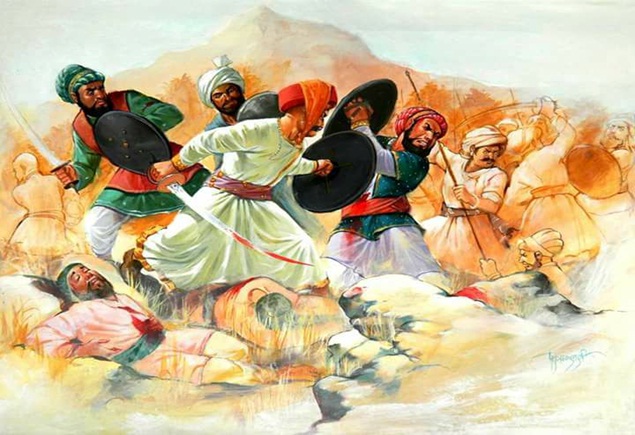Introduction:
The Battle of Panipat III, fought on [Date], marked a pivotal moment in Indian history, shaping the destiny of the subcontinent for centuries to come. This monumental clash between the forces of the Maratha Empire and the Durrani Empire under Ahmad Shah Durrani, also known as Ahmad Shah Abdali, reverberated across the political landscape of 18th-century India. In this article, we delve into the events leading up to the battle, the strategies employed by the opposing sides, and the far-reaching consequences of this fateful encounter.
Context and Background:
The backdrop of the Battle of Panipat III can be traced back to the decline of the Mughal Empire and the emergence of regional powers vying for supremacy in the Indian subcontinent. By the mid-18th century, the Marathas had established themselves as a formidable force, expanding their influence across central and western India. However, their ascendancy was challenged by external threats and internal conflicts, setting the stage for a momentous confrontation on the battlefield of Panipat.
Causes of the Conflict:
The primary cause of the Battle of Panipat III was the Maratha expansion into northern India, which brought them into direct conflict with the Durrani Empire, ruled by Ahmad Shah Durrani. Ahmad Shah Durrani, also known as Ahmad Shah Abdali, sought to assert his authority over the regions bordering his empire, leading to tensions with the Marathas, who viewed themselves as the rightful successors to the Mughal legacy. Additionally, the decline of the Mughal Empire had created a power vacuum, further exacerbating regional rivalries and territorial disputes.
Strategies and Tactics:
Both sides employed distinct military strategies and tactics during the Battle of Panipat III. The Marathas, under the leadership of Sadashivrao Bhau, fielded a vast army comprising infantry, cavalry, and artillery. Their tactics relied on swift maneuverability and massed infantry assaults, aiming to overwhelm the enemy with sheer numerical superiority. In contrast, Ahmad Shah Durrani’s forces, consisting primarily of Afghan and Pashtun warriors, utilized guerrilla tactics and mobility to outmaneuver the Marathas and exploit weaknesses in their formations.
The Battle and Its Outcome:
The Battle of Panipat III commenced with ferocious intensity, as both sides clashed in a desperate struggle for supremacy. The Marathas initially gained ground, but Ahmad Shah Durrani’s disciplined cavalry and strategic acumen turned the tide of battle. The decisive moment came when the Maratha center, weakened by relentless enemy attacks, collapsed under the weight of the Durrani onslaught. The ensuing chaos and carnage sealed the fate of the Maratha army, resulting in a resounding victory for Ahmad Shah Durrani.
Consequences and Legacy:
The aftermath of the Battle of Panipat III reverberated far beyond the battlefield, reshaping the political landscape of India for decades to come. The defeat dealt a severe blow to Maratha ambitions of hegemony, paving the way for the ascendancy of the Durrani Empire in northern India. Moreover, it highlighted the vulnerability of Indian polities to external invasions and underscored the importance of unity and strategic foresight in the face of foreign threats. The legacy of the Battle of Panipat III endures as a cautionary tale and a testament to the enduring struggle for power and dominance in the annals of Indian history.
Conclusion:
The Battle of Panipat III stands as a defining moment in the chronicles of Indian history, encapsulating the complex interplay of political, military, and socio-economic forces that shaped the destiny of the subcontinent. From its origins in regional rivalries to its far-reaching consequences, this epic clash continues to resonate as a symbol of resilience, sacrifice, and the enduring quest for power and prestige. As we reflect on the lessons of the past, the legacy of Panipat serves as a reminder of the enduring importance of vigilance, unity, and strategic foresight in the pursuit of national security and prosperity.






